One of my absolute favorite parts of being a grown-up remains the ability to take the time to explore new authors and read as much as I want to for pleasure. I have certainly been taking advantage of this opportunity, and have been reading even more this year than I did as a Comparative Literature major back in school (ok – maybe not that much – but it’s certainly close!).
As you will discover in the reviews below, the thread running through my most recent round of literary discovery is fantasy and the surreal with, as usual, a touch of mystery thrown in for good measure. This time around, I also took a brief detour into the world of (surprise!) non-fiction for several fascinating books about the history of the English language.
Here are my quick reviews. I would love to hear your thoughts and recommendations as well!
Haruki Murakami: 1Q84, Wind-Up Bird Chronicle, After Dark, & Hard-Boiled Wonderland and the End of the World



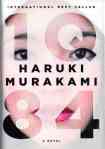 As you can tell from this and the last Books Worth Reading post, I’ve been on quite the Murakami kick lately. With good reason too – if you have not read anything written by this man, drop everything and head to the library (or Kindle store) right now!
As you can tell from this and the last Books Worth Reading post, I’ve been on quite the Murakami kick lately. With good reason too – if you have not read anything written by this man, drop everything and head to the library (or Kindle store) right now!
All of his books share a haunting sense of semi-surreality and incredibly evocative imagery, and all include at least one awesomely mundane scene where the protagonist whips up a simple (yet delicious!) meal. Murakami, you certainly know how to make me hungry!
Of the four listed above, the one that really stood out for me was 1Q84 (pronounced one-cue-eighty-four in English – in Japanese, the pronunciation for the number 9 and the letter Q are the same). The novel takes place in – surprise, surprise –1984, and begins with the protagonist, Aomame, slipping unknowingly into a dystopian alternate version of reality (the “Q” in the title stands for “question,” as Aomame must figure out where she has ended up and how – and if – she can return). As it progresses, Aomame’s story intertwines with that of Tengo, a ghostwriter who takes on an unusual project – which quickly turns out to be much more than it seems.
The novel is composed of 3 books and runs to nearly 1,000 pages, so any attempt to distill the complex plot to a few sentences is doomed to fail. Suffice it to say that 1Q84 is the most deeply satisfying of Murakami’s novels, and the world it creates is as convincing as the reality we live in.
As for the others, Wind-Up Bird Chronicle explores the increasingly surreal happenings that befall the unemployed protagonist, Toru Okada, after his wife’s cat runs away and she subsequently abandons him. The novel is part detective story, part love story, and part historical fiction as Toru’s investigation unburies secrets from Japan’s forgotten Manchurian campaign during WWII. After Dark was the quickest read and the most forgettable of the four listed above. It takes entirely between the hours of midnight and dawn as an ensemble of odd characters collide in a seedy section of Tokyo. Hardboiled Wonderland and the End of the World was another one of my favorites. It is split between two narratives – that of the Hard-Boiled Wonderland and that of the End of the World. The two distinctly dystopian narratives gradually converge, and in the process the novel explores the concepts of identity and the unconscious mind.
George R. R. Martin: Song of Ice and Fire series




 After weeks of being the only one at work who couldn’t join in the (many, many) conversations about the HBO series Game of Thrones, I decided to finally break down and actually read the books. Various people have been recommending the Song of Ice and Fire series to me since 2008, and I have been lent the first book in the series, Game of Thrones, on several occasions. As much as I love fantasy novels in general, I had resisted beginning the series for so long because it reminded me too much of Robert Jordan’s Wheel of Time series, which I had a rather embarrassing level of obsession with in middle school.
After weeks of being the only one at work who couldn’t join in the (many, many) conversations about the HBO series Game of Thrones, I decided to finally break down and actually read the books. Various people have been recommending the Song of Ice and Fire series to me since 2008, and I have been lent the first book in the series, Game of Thrones, on several occasions. As much as I love fantasy novels in general, I had resisted beginning the series for so long because it reminded me too much of Robert Jordan’s Wheel of Time series, which I had a rather embarrassing level of obsession with in middle school.
Eventually, uncomfortable flashbacks to 7th grade aside, Song of Ice and Fire (or, more accurately, the TV version Game of Thrones) became such a cultural force that I couldn’t ignore it any longer.
And I’m glad.
Flawed as the books may be (excessive rape scenes, female characters who are consistently defined by their appearance, stomach-churning amounts of often superfluous violence), the stories are incredibly well-crafted in their complexity and the characters are horribly and relatably human. Even when I was utterly disgusted, I couldn’t put these books down.
So, if you haven’t already, it’s worth giving these a read. It’s also worth taking some time to consider the role of women in fantasy literature and why “historical accuracy” isn’t much of an excuse for making all your female characters either mothers or sex objects (and why one token “warrior woman” isn’t enough). The articles listed below go a long way towards explaining why even though George R. R. Martin (admirably) said this:
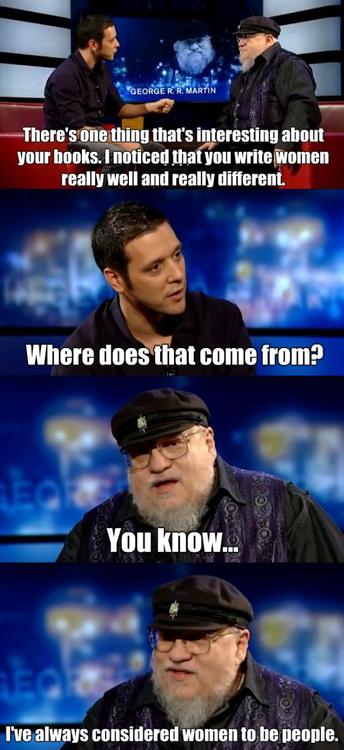
…his depictions of women and the world that he created can still be considered problematic.
Authentic Sexism in Fantasy: Let’s Unpack That
By the way – the books left with absolutely NO desire to see the show. Less complexity and more graphic violence? No thanks.
Carlos Ruiz Zafón: The Shadow of the Wind, The Angel’s Game, & The Prisoner of Heaven


 I first discovered Carlos Ruiz Zafón in high school, when I was working retail in Portland, Maine’s scenic Old Port. Summers in Maine are gorgeous, and so I liked to take my half-hour lunch breaks outside, across the street. One day, as I settled down to eat my sandwich on a sculptural bench, I noticed a book seemingly abandoned beside me. The Shadow of the Wind. Picking it up to look, I found a sticker inside the front cover saying that the book was meant to be passed along from person to person – read, and then placed strategically for someone else to find. Intrigued, I began to read.
I first discovered Carlos Ruiz Zafón in high school, when I was working retail in Portland, Maine’s scenic Old Port. Summers in Maine are gorgeous, and so I liked to take my half-hour lunch breaks outside, across the street. One day, as I settled down to eat my sandwich on a sculptural bench, I noticed a book seemingly abandoned beside me. The Shadow of the Wind. Picking it up to look, I found a sticker inside the front cover saying that the book was meant to be passed along from person to person – read, and then placed strategically for someone else to find. Intrigued, I began to read.
I was entranced. The first in the Cemetery of Forgotten Books series (the three titles above are the only three so far), The Shadow of the Wind take place in post-Civil War Barcelona. In the novel, the young Daniel Sempere comes across a mysterious book by an even more mysterious author. Captivated, he probes into its murky past and uncovers much more than he bargained for.
The other two books likewise center around the Sempere & Sons book store and involve a visit to the mysterious Cemetery of Forgotten Books. In The Angel’s Game, a prequel to The Shadow of the Wind, struggling author of pulp fiction David Martín takes on a suspicious commission from a sinister publisher in hopes that it will allow him to reclaim some part of his shattered life. Although not as strong and satisfying as The Shadow of the Wind – the plot is perhaps overly melodramatic and a shade difficult to follow – The Angel’s Game is still a fascinating read, especially in the context of the series. The Prisoner of Heaven, which again takes up Daniel Sempere’s storyline, is a much stronger effort. Zafón returns from the metaphysical mysteries of The Angel’s Game to the more personal and political drama of The Shadow of the Wind.
All three are thrilling examples of modern Gothic fiction, and the richness of Zafón’s language and characterization ensure that his tales of blood and darkness will captivate even when the plot stretches thin.
Maureen Johnson: The Name of the Star & The Madness Underneath

 Full disclosure: I LOVE young adult fantasy novels, and in particular young adult fantasy novels featuring strong and spunky female leads.
Full disclosure: I LOVE young adult fantasy novels, and in particular young adult fantasy novels featuring strong and spunky female leads.
The first two (and unfortunately as yet only) books in Maureen Johnson’s Shades of London series certainly fit the bill. I discovered the series (and the author) during a visit to sunny southern California to visit my friend and fellow fantasy-lover Kate. She entrusted to me a copy of The Madness Underneath to bring back to St. Louis as a birthday present for our mutual friend Catie. Intrigued by Kate’s effusive recommendation and the synopsis on the back cover, I ended up downloading the first book – The Name of the Star – on my phone and reading the entire novel on the plane ride back to St. Louis. I followed up with The Madness Underneath and polished off both books before bedtime.
In some ways reminiscent of Christopher Fowler’s Peculiar Crimes Unit series (another of my perennial favorites), the books follow American transplant Rory Deveaux’s involvement with the secret ghost police of London.
In The Name of the Star, Rory’s new London boarding school finds itself at the center of a series of brutal murders mimicking the Jack the Ripper killings of more than a century before. The only one to see the prime suspect, Rory races to solve the mystery of the murderer’s identity before it’s too late. Closely following The Name of the Star chronologically, The Madness Underneath tracks Rory’s return to London and the sinister events that follow. Rather than being a self-contained mystery like the first novel, The Madness Underneath is clearly a set-up for the rest of the series.
I can’t wait to see what the next novel – the as yet unpublished Shadow Cabinet – will bring!
Bill Bryson: Made in America: An Informal History of the English Language
 Further disclosure: I am an English nerd, and never tire of reading books of pop etymology and linguistics.
Further disclosure: I am an English nerd, and never tire of reading books of pop etymology and linguistics.
This is where my reading takes a sharp turn from the fantastic into the linguistic.
Bill Bryson has been a favorite of mine since I first read A Walk in the Woods back in high school, and I have read practically every work in his oeuvre since (with the notable exception of A Brief History of Nearly Everything – sorry, Joe). Some of my absolute favorites include his forays into the history of English and those who write it. I especially love Bryson’s Shakespeare: The World as a Stage and The Mother Tongue: English and How It Got That Way.
Recently, I decided it was finally time to dive into the follow-up to The Mother Tongue, which focuses entirely on American English rather than examining the language as a whole. In typically Bill Bryson fashion, the book was hilarious (I’m pretty sure I actually laughed out loud on several occasions), well-researched, and full of fascinating historical trivia (I’m definitely sure that I repeatedly bothered multiple people with all of my head-popping-up “Did you know!?” moments).
As a further bonus, this book will teach you that barely any of the American history you learned in elementary school is actually true as Bryson deconstructs our national creation myths (from the Pilgrim’s to the Founding Father’s to General Motors).
Even if you haven’t any more than a passing interest in words and where they come from, this book is a rollicking read.
John McWhorter: Our Magnificent Bastard Tongue: The Untold History of the English Language
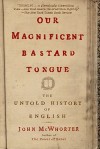 Did I mention that I’m a nerd who loves reading books about English?
Did I mention that I’m a nerd who loves reading books about English?
When I was picking up Made in America at the library, I couldn’t resist grabbing this slim little volume off the shelf as well (I mean, with a title like that…).
Our Magnificent Bastard Tongue is a super-quick read (I started the book on the metro as I was heading to a morning doctor’s appointment and finished it up during my lunch break later that day). Not only does the book run to only a brief 200 pages or so, it’s also written in a style that’s incredibly accessible to the non-linguist (McWhorter is no impenetrable Saussure, that’s for sure).
While this read may be most enjoyable for the more serious armchair linguist (its main premise is an argument for Celtic influence on early forms of English), it’s straightforward style and fast pace ensure that it is anything but boring.
Intrigued by anything you read here? Check out Books Worth Reading and More Books Worth Reading, the first two installments in this series of mini-reviews, for even more thoughts and recommendations.
I would also love to hear any of your thoughts and recommendations, so please feel free to leave ‘em in the comments!

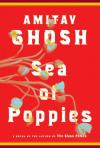



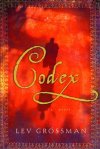
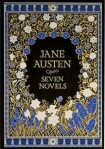


 Much has already been said about Bleak House, so I’ll keep my comments brief. You know this one.
Much has already been said about Bleak House, so I’ll keep my comments brief. You know this one. Beginning last summer, I read every single Sherlock Holmes story every written – the second time through. I love tension in these stories between the fantastic and the mundane, and when you throw in the indomitable logic of Sherlock, Watson’s endearing adoration, and the gritty backdrop of nineteenth-century Britain, there’s no way I can resist.
Beginning last summer, I read every single Sherlock Holmes story every written – the second time through. I love tension in these stories between the fantastic and the mundane, and when you throw in the indomitable logic of Sherlock, Watson’s endearing adoration, and the gritty backdrop of nineteenth-century Britain, there’s no way I can resist. In the Woods came highly recommended to my by my friend Kate, both by letter and by blog (in fact, you can even
In the Woods came highly recommended to my by my friend Kate, both by letter and by blog (in fact, you can even  The Likeness is the sequel to In the Woods, this time from the perspective of the first detective’s partner. Previously an undercover agent, she is shocked when a murder victim is discovered to have been inhabiting the identity she abandoned when she left undercover work years before. The only way to solve the crime and discover the girl’s true identity? To resume her former role, of course, and impersonate the impersonator who was impersonating who she once impersonated…
The Likeness is the sequel to In the Woods, this time from the perspective of the first detective’s partner. Previously an undercover agent, she is shocked when a murder victim is discovered to have been inhabiting the identity she abandoned when she left undercover work years before. The only way to solve the crime and discover the girl’s true identity? To resume her former role, of course, and impersonate the impersonator who was impersonating who she once impersonated… While J.K. Rowling’s distinctive style was pleasantly familiar from the first, it soon became clear that, far from being a Harry Potter for grown-ups, The Casual Vacancy was deeply depressing, and even more so because of its utter mundanity. The story takes place in a small, insular town in England. The plot is centered around the vicious politics of the older generation on the local town council, as well as the search of the younger generation for something or someone to care about.
While J.K. Rowling’s distinctive style was pleasantly familiar from the first, it soon became clear that, far from being a Harry Potter for grown-ups, The Casual Vacancy was deeply depressing, and even more so because of its utter mundanity. The story takes place in a small, insular town in England. The plot is centered around the vicious politics of the older generation on the local town council, as well as the search of the younger generation for something or someone to care about. Margaret Atwood’s novels are dystopian, feminist, agnostic, and thoroughly irresistible. I had read (and very much enjoyed) both The Handmaid’s Tale and Oryx & Crake, so when I spotted the small Atwood section at the library, I pulled out the two I hadn’t yet encountered.
Margaret Atwood’s novels are dystopian, feminist, agnostic, and thoroughly irresistible. I had read (and very much enjoyed) both The Handmaid’s Tale and Oryx & Crake, so when I spotted the small Atwood section at the library, I pulled out the two I hadn’t yet encountered. The Penelopiad re-imagines The Odyssey from Penelope’s point of view. Sidelined as the quintessential faithful wife in the original, Atwood gives Penelope a personality and voice of her own. The novel focuses on a throwaway line from The Odyssey, when it is stated that Odysseus hangs twelve of Penelope’s maids in addition to killing her many suitors when he returns from the war and his subsequent extended voyage. The original never makes it clear exactly why those maids were murdered, and this question becomes a central piece of The Penelopiad. In between Penelope’s chapters, the maids themselves form a sort of Greek chorus, finding at least a collective voice. Little novel, lots of heavy themes. Rich and rewarding reading.
The Penelopiad re-imagines The Odyssey from Penelope’s point of view. Sidelined as the quintessential faithful wife in the original, Atwood gives Penelope a personality and voice of her own. The novel focuses on a throwaway line from The Odyssey, when it is stated that Odysseus hangs twelve of Penelope’s maids in addition to killing her many suitors when he returns from the war and his subsequent extended voyage. The original never makes it clear exactly why those maids were murdered, and this question becomes a central piece of The Penelopiad. In between Penelope’s chapters, the maids themselves form a sort of Greek chorus, finding at least a collective voice. Little novel, lots of heavy themes. Rich and rewarding reading.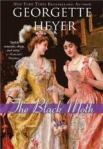 I’ll admit up front that Georgette Heyer novels are one of my guilty pleasures (that I’m not actually that guilty about). While her novels may be classified as Regency romance, it’s totally historical fiction, right? Definitely not romance…right?
I’ll admit up front that Georgette Heyer novels are one of my guilty pleasures (that I’m not actually that guilty about). While her novels may be classified as Regency romance, it’s totally historical fiction, right? Definitely not romance…right? When I finished this novel – which is written as if it were a scholarly history, complete with extensive footnotes citing nonexistent sources – I felt entirely convinced that there is, in fact, a tradition of English magic beginning with the Raven King. I was actually rather surprised that his name had never come up in my AP European History class in high school. After a few minutes of reflection, it occurred to me that magic probably still didn’t exist, and the Raven King’s legacy of English Magic had as much connection to reality as Harry Potter’s.
When I finished this novel – which is written as if it were a scholarly history, complete with extensive footnotes citing nonexistent sources – I felt entirely convinced that there is, in fact, a tradition of English magic beginning with the Raven King. I was actually rather surprised that his name had never come up in my AP European History class in high school. After a few minutes of reflection, it occurred to me that magic probably still didn’t exist, and the Raven King’s legacy of English Magic had as much connection to reality as Harry Potter’s. which is never a good idea.
which is never a good idea. Feeling let down by the end of Jonathan Strange & Mr. Norrell, I felt that this book had the potential to fill the gap. While there wouldn’t be any magic, it would at least be set (predominantly) in Britain during and after the Napoleonic Wars. When I read the back of the book, I knew I had to give it a try. Always one to be won over by a feminist slant, I was pleased to read, “The women in this circle have often been portrayed merely as spouses or unknowns; Daisy Hay finally gives them due prominence and a narrative vein of their own.” I was also very much intrigued by the idea of a group biography.
Feeling let down by the end of Jonathan Strange & Mr. Norrell, I felt that this book had the potential to fill the gap. While there wouldn’t be any magic, it would at least be set (predominantly) in Britain during and after the Napoleonic Wars. When I read the back of the book, I knew I had to give it a try. Always one to be won over by a feminist slant, I was pleased to read, “The women in this circle have often been portrayed merely as spouses or unknowns; Daisy Hay finally gives them due prominence and a narrative vein of their own.” I was also very much intrigued by the idea of a group biography. I will preface my comments by saying that I am not usually enamoured of short stories. True, the stories of Edgar Allan Poe are among my favorite works of literature, and I will (and have) happily read through them all in one sitting. But, as a general rule, I tend to prefer more long-form writing.
I will preface my comments by saying that I am not usually enamoured of short stories. True, the stories of Edgar Allan Poe are among my favorite works of literature, and I will (and have) happily read through them all in one sitting. But, as a general rule, I tend to prefer more long-form writing.